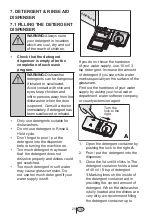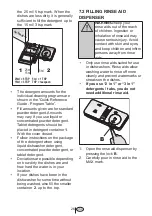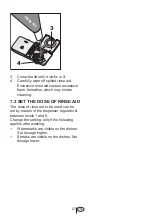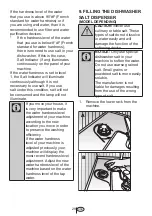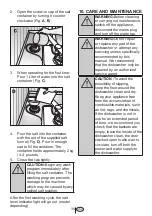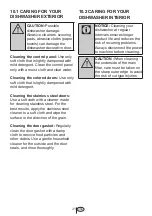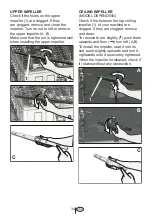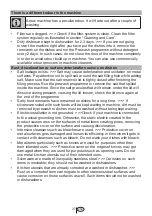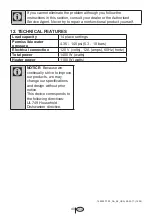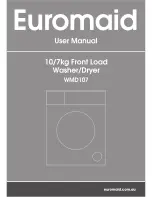
39
USA
A smear remains on glasses that resembles milk stain which can not be
removed when wiped by hand. A bluish / rainbow appearance occurs when
the glass is pointed to light.
•
Excessive rinse aid is used. >>>Lower rinse aid setting. Clean the spilled
rinse aid when adding rinse aid.
•
Corrosion has occurred on glass due to soft water. >>> Measure the
hardness of the supply water appropriately and check the water hardness
setting. If your supply water is soft (<5 dH), do not use salt. Choose
programmes that wash in higher temperatures (e.g. 60-65°C). You can also
use glass protective detergents that are commercially available.
Foam forms in the machine.
•
Dishes are washed with hand-wash detergent by hand but not rinsed before
placing them into the machine. >>> Hand-wash detergents do not contain
antifoam. There is no need to hand-wash the dishes before placing them into
the machine. Removing the coarse soil on the dishes under tap water, with a
tissue paper or fork will be sufficient.
•
Rinse aid has spilled into the machine when adding rinse aid. >>> Take care
that rinse aid is not spilled in the machine when you are filling it. Clean any
spilled rinse ait with the help of a tissue paper/towel.
•
Lid of the rinse aid reservoir is left open. >>> Make sure that the lid of the
rinse aid reservoir is closed after adding rinse aid.
Kitchen utensils are broken.
•
Dishes are not placed orderly in the machine. >>> Load the dishes as
described in the user manual.
•
Baskets are overloaded. >>> Do not overload the baskets in excess of their
capacity.
Water remains in the dishwasher at the end of the programme.
•
Filters are clogged. >>> Check if the filter system is clean. Clean the filter
system regularly as illustrated in section “Cleaning and Care”.
•
Discharge hose is clogged/blocked. >>> Check the discharge hose. If
necessary, remove the discharge hose, clear the blockage and insert is as
illustrated in the user manual.

